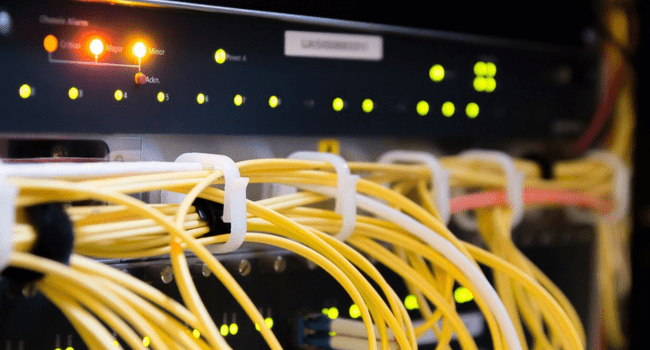Table of Contents
Are you looking for the right business broadband connection or wondering whether to opt for a broadband connection or a WI-FI connection? Read on to get an in-depth understanding of what a broadband connection is and what is the difference between broadband and WIFI.
Business broadband vs consumer broadband
The major distinction between business broadband and consumer broadband is speed linked. Business broadband tends to have higher speeds to facilitate efficient mediums of working. Many business broadband providers also offer 24X7 services. A few of the major benefits that differentiate business broadband from consumer broadband include –
∙ More reliable and quick than standard consumer line
∙ Static IP addresses
∙ Comprehensive security features
∙ VPN included
∙ Low contention ratio
∙ Offsite backup
Cutting through jargon
The business connectivity and the broadband world is filled with jargons, i.e., confusing acronyms. It can be a very tricky process to navigate when you are looking for your initial business broadband or comparing the renewal plans against present suppliers. Understanding what every acronym means requires a better understanding of which choice may be best for your company. Here are some of the important jargons that you must know-
WAN – Wide area network is the telecom network that covers a huge geographic region.
LAN – Local area network is the network that connects a personal computer in a limited or specific region.
FTTP – Fibre to premises is the internet connection that uses fibre cables to your premises, removing the requirement for copper wires.
FTTC – Fibre to the cabinet, internet connection uses fibre lines to the local cabinet and then the copper wires to the premises.
ADSL – Asymmetric digital subscriber line is the major technology behind this traditional copper system.
SoGEA – SoGEA is a single-order generic Ethernet access, which is a good business broadband connection. This bypasses the requirement for a traditional phone line network, which is often used with VoIP solutions.
G. Fast – This is a faster/quicker alternative to the FTTP.
What’s the difference between broadband and WIFI?
To understand the difference between broadband and WIFI, first, you have to understand what WIFI is.
WIFI is a medium through which your internet connection from your broadband is distributed to devices wirelessly (like smart devices, laptops, or game consoles). WIFI refers to the radio signals which are transferred from a wireless router to a device nearby, which basically converts signals into data for use. The cable in your home is plugged into a wireless router, which is known as broadband.
WIFI basically stands for wireless fidelity
The modem is the box which connects your network at home to the wider internet. The router is the box that allows all your wireless and wired devices to use the internet network at once. Often, the internet service provider provides you with a box that tends to act as both router and modem, but they are still distinct technologies, as not all the modems include routers and not all the routers come with modems. You require both integrated and unintegrated systems to disseminate the connection of the internet to all devices at home.
Which broadband is the best option for you?
To make an informed decision, it is worth thinking about what type of internet user you are and what speed you need. Take a look at the example below –
Light user
You like checking your emails, flicking through the Facebook network, and placing online orders. You might stream occasional television shows or a film. An internet broadband speed of 100 Mbps must be enough for this purpose.
Medium user
You are online for nearly five to six hours a day, enjoying back-to-back Amazon and Netflix binges as well as gaming tournaments. Also, you might have a good smart speaker or other great smart technologies requiring a continuous internet connection. The broadband speed suggested in such a scenario is between 100 Mbps and 200 Mbps
Heavy user
If you are always online during peak hours and you need to upload and download huge files on a daily basis, then you are a heavy user. If so, you cannot afford to be held back owing to any kind of buffering. You need a quick, fast, and reliable connection for video calls, online meetings and conferences. In this case, you need to look out for anything over 300 Mbps speed.
Very heavy user
Here your property is digitally demanding, with numerous devices being used by multiple individuals at once. So, you do not have much time to wait around for the uploads or slow file transfers. Your home may be crammed and filled with smart speakers as well as virtual assistants. In this case, it is suggested that you opt for the highest possible speed. This will allow you to future-proof your property as well as ensure you can simply maintain your heavy internet lifestyle.
Conclusion
When selecting an internet service provider, you must opt for the one providing the best service at the best price possible. If you are looking for a service provider with a proven record of good customer support, then go through the internet and check the reviews to make an informed decision.
In case you are looking for a provider offering various services, then you must look out for an all-in-one kind of solution. In case you want more specific services, it may be better that you move ahead with a niche service provider. Before finalizing your provider, you must compare the prices and features provided by each service provider in your area.
Read more on KulFiy
Is TV the new tablet for seniors?
3 Best Wireless Internet providers in California
What is Online TV or Internet TV? Watch TV from anywhere in the world
